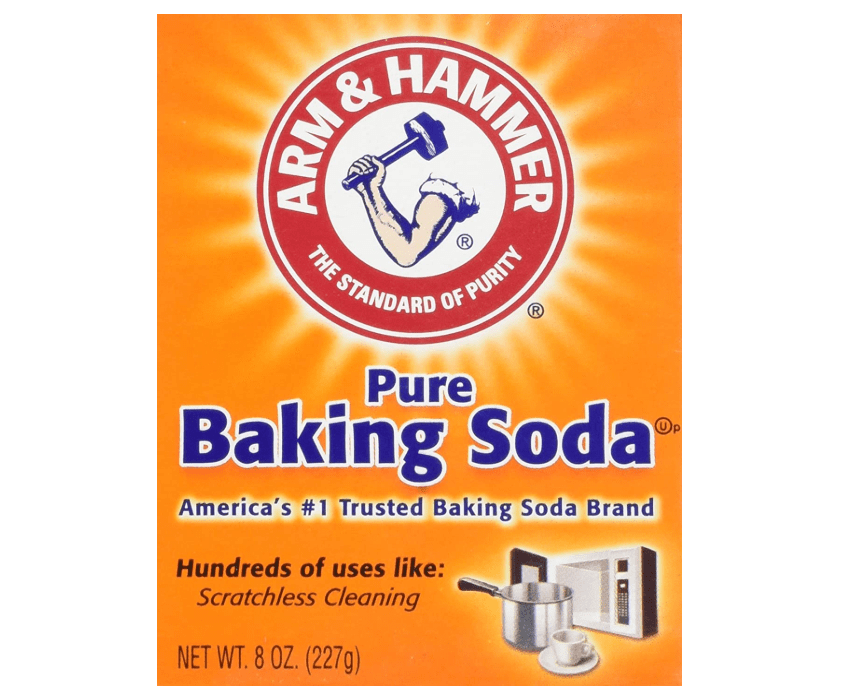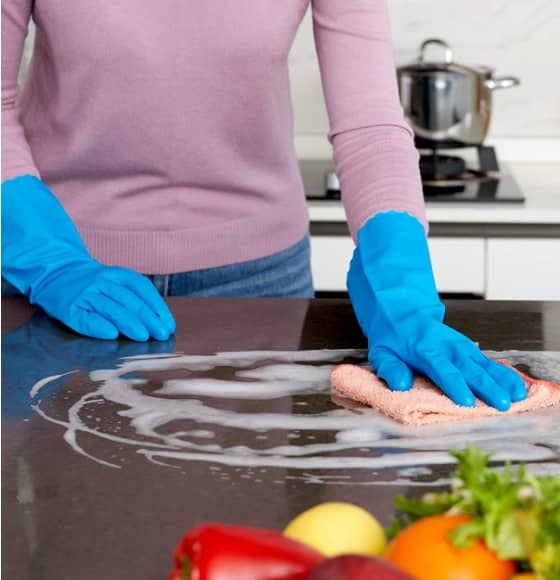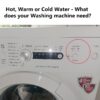Have you accidentally put the dish soap in the dishwasher detergent dispenser? Or do you want to know what the results might be if you put the dish liquid instead of dishwasher detergent?
Either way, you need to have the right know-how of using the dish soap in the dishwasher. If that happened accidentally, then to fix your dishwasher read this section of the article.

Otherwise, read ahead to know what might happen if you replace dishwasher detergent with liquid dish soap and how to properly use dish soap to avoid creating troubles for your dishwasher.
Putting only dish soap will obviously create some issues in your machine. I will not say that it will completely ruin the dishwasher but messing up the plumbing system of the device, has greater chances.
Dishwasher detergents vs dish soap (What’s so different about these two?)
Dishwasher detergents are made with low-sudsing formula. Whereas using only one pump of dish soap fills your sink with bubble bonanza.
Understood the difference?
The dishwasher is designed to handle as minimum amount of suds as possible while giving the maximum amount of cleaning. Also, more suds require more water, but a dishwasher at the end is designed to save us gallons of water.
The entire plumbing system of a dishwasher is thus manufactured in such a way that it can only handle low-sudsing detergents like the specially formulated ones for the dishwasher.
When you put dish soap in the dishwasher, it creates suds – a heck lot of suds! Your dishwasher is not designed to cope up with this amount of suds hence the plumbing system will get messed up severely.

How putting only dish soap in the dishwasher can cause trouble?
Dishwasher detergents are made specifically for the purpose of washing dishes in the dishwasher. So, if you use dish soap instead of dishwasher detergent, ‘bubble troubles’ may follow. But that doesn’t mean you cannot use dish soap in a dishwasher.
You surely can substitute a dishwasher detergent with dish soap, while being cautious and following some crucial rules.
In this article, I will guide you on the process of how to put dish soap in the dishwasher so that it does not get affected.
Yes, it may badly affect your dishwasher. Why? Because the dishwasher detergent that you use, are less suds-prone. Whereas any liquid dish detergent usually comes with sudsing formula.
So, running a dishwasher only with a sudsing dish soap will create overflow from the sump, as the dishwasher will aggressively pump and spray bubbles in the inside cavity.
The mess will not be limited to the inside of your dishwasher rather it will seep out and make your floor slippery and may create water damage to your kitchen cabinets. Rusting or corroding problems may also occur for the machine chassis. Even if you have a stainless steel dishwasher, it has some iron, steel, and aluminum chassis parts that are prone to rust.
Additionally, the cleaning will be a headache. Only the person who has run the dishwashing machine with a dish soap knows the bubble effect of it. It is a cumbersome process and needs a lot of effort, time and devotion.
So, using only dish soap in a dishwasher is a big ‘no-no’ for me. But if you want to use dish soap instead of expensive dishwasher detergents then read on, I have the perfect trick for you.
Can I or Can I not use dish soap in my dishwasher?
Yes, you can.
What? But you just said my dishwasher will face ‘suds go wrong’ if I use dish soap instead of dishwasher detergent!
True. I said that, and it will face oversudsing. There’s no doubt about that.
But there is a secret ingredient sitting in your kitchen which can make suds go away. And you can use the dish soap with it and the result will come out absolutely fine.
Behold – Baking Soda.
Have you followed the DIY dishwashing detergent videos on the internet lately? My goodness, they are flooding! And everyone is trying them out.

So, I too like others follow the herd and guess what, making all-natural dishwashing detergent looks fun on the screen but not in real life.
Also, for me, while living in a hard water area with a higher level of humidity those DIY ideas fail terribly in performance.
So, what is the point of saying all this? My point is that lazy people like us do not do DIYs rather go with small hacks and do with cheaper items. Like the dish soap and the baking soda.
Ok enough with my blabbering! Here’s the recipe. Point to be noted don’t just use any dish soap, given your dishwasher’s durability a priority always go with a good quality dish soap like this septic-safe one (Amazon link).
Ingredients: Liquid dish soap and baking soda.
Direction Of Use:
- Fill the dishwasher detergent cup with baking soda.
- Put two drops or one squirt of liquid dish soap (I use this bottle from amazon to keep my dish soap, in case you want to know the exact squirt amount).
- Close the lid and run the dishwasher as you do.
See there is no exact amount for the dish soap. You may feel that only a squirt or two drops are very low for a full load but given the oversudsing issue, it’s always better to lower the amount.
And I have learned from many previous mistakes of mine that more is always not better. If the load comes out to be less clean, next time you can increase the amount a bit. So, customizing is key here.
The best part of this recipe is, it is cheaper…..way cheaper than you think!
Here’s how using dish soap and baking soda can save you dollars!
Dishwashing detergents are highly expensive. Only those filled with chemicals are cheap and some natural dishwasher detergents that work wonder are expensive.
So, I use a dish liquid soap that costs me less than $0.15 / fl oz and 15 lbs baking soda costs me around $10. Now on every load, if I use 3 teaspoons of baking soda and two drops of liquid soap, then the entire load costs me less than 1 cent (Seriously! I did the math).
In case, if you are wondering which unbelievably cheap natural liquid dish soap I use, this is the one from amazon (It has received ‘A’ grade from EWG). Clearly it fits my budget and suits my health. And here’s the baking soda (you also use this I suppose, very popular brand).
One thing you must know while using this recipe:
Even if I use the dish soap and baking soda recipe frequently, once in a week I try to use my natural detergent pods.
Because they are specially designed to clean the dishes in the dishwasher. And the particular dishwasher pods that I use add a beautiful shine to all my dishes what the combination of cheap dish soap and baking soda does not.
You can use whatever you like. I am not saying it has to have the dishwasher pods. Any dishwasher detergent you prefer will do the work but remember to use a septic safe dishwasher detergent like this one to keep away your septic tank from troubles.
What to do if I run a dishwasher with dish soap only?
Now, if you are here to know, will dish soap ruin a dishwasher? I have answered that already. But in case, you accidentally put dish soap in a dishwasher, this information may help you a lot.
One beautiful night when I was so tired with my hectic schedule and felt so darn sleepy that I failed to distinguish the difference between my liquid dish soap and liquid dishwasher detergent bottle.
Even after putting liquid soap I was so absent-minded I switch the start button on and went to bed (facepalm)!
Yes! I did that. After finding out that there are many like me who accidentally put the wrong liquid in the dishwasher, I felt less of a stupid.
So, the next morning when I woke up in a bed of suds I was panic-stricken thinking something is wrong with my dishwasher and soon I realized the height of my stupidity. Then I took out the most effective weapon to deal with this – ‘Internet.’
These are the steps I followed and it worked. Keep this page bookmarked or remember the steps, in case you do such a thing in the future and trust me it happens. To avoid this from happening, store your detergents in two different sized and shaped bottles.
Solutions in two different situations:
A. You have filled the dishwasher detergent unit with dish soap and realized your mistake before running the dishwasher.
Great! The steps are easy as you have realized quickly. Just don’t be lazy to perform it.
I used the wet/dry shop vac. Read the next para if you don’t have any wet/dry vac (although FYI if you have kids in the house, wet/dry vac like this is a savior other than saving you from situations like this, trust me). Pour water a couple of times in the dispenser and then use the vac to get the residue out completely. That’s it. It will solve your issue.
Use a medicine dropper syringe, to pull the liquid out from the dispenser if you don’t have a vac. It takes time and needs serious patience. But it will do the work.
B. You ran the machine with the dish soap and now facing suds bonanza:
Ok, don’t panic I got your back. Follow these steps.
Have you switched the machine off?
Cancel the cycle right now.
The longer the machine runs the more suds it creates. The dishwasher pump and spray will continuously spit out bubbles until it is stopped. If the soaps and suds have not started to leak out from the machine then stopping the machine will minimize a heap of work for you.
Suppose, the dishwasher runs for a longer period and you realize your mistake after it has started leaking bubbles. No doubt your floors will become slippery or the kitchen cabinets will be in a chance of getting water damaged. Then your cleaning work will also get increased by tenfold.
So, realizing sooner and switching the dishwasher off saves you time and effort. It will also ensure that more foams do not make their way deep into the dishwasher’s plumbing system.
But one thing you cannot get rid of even after switching the dishwasher off and that is the suds leaking out from the dishwasher. Unfortunately, the bubbles will find their way into your flooring. Don’t worry, we will solve the issue in the next step.
SOAKING:
The next step is soaking, soaking and soaking. Grab some towels or anything that can soak the bubbles. Remember you will need quite a number of towels obviously depending upon the amount of suds that have been created.
Don’t open the dishwasher at this point. First, deal with the suds on the floor so that it does not do any kind of water damage. Soaking the suds will also minimize the chances of your slippering and if you have kids, keep them away from the spot as they tend to be in love with bubbles.
Soak the foam and keep some towels under the dishwasher to tackle with the seeping suds. Also please don’t use newspapers instead of towels – terrible idea if you are looking for enhanced cleaning and effort. Also, If towels are not handy then you can use newspapers but using towels will be the best practice.
Remove your priceless dishes
The next step is to remove your dishes and placing them in the sink from the dishwasher. When someone asks me will dish soap ruin dishwasher, and my answer is always ‘no, it will ruin your peace of mind’.
Because when you place your precious dishes into the dishwasher and put only dish soap while leaving it for the whole night to clean, the crazy amount of suds can leave white stains behind.
Either you need to hand wash your dishes which will take more time and effort or you need to wait for the dishwasher to get rid of suds completely before you can again start the cycle to clean your dishes. So, wasting time and effort again! Never forget to mix baking soda with the dish soap to avoid this mess.
Clean the inside cavity like this
Get more towels to clean the inside of your dishwasher. As I have mentioned previously that no matter what your dishwasher tub is made of (even if it is of stainless steel), oversudsing can cause some serious issues.
There will be some excess water in the dishwasher, after you take out all the dishes. Get a container, preferably a bowl and clean the water out of the dishwasher. If the water is too hot then throw some ice cubes in and start getting the water and bubbles out.
After that use the towels to soak the top, bottom, and side walls inside the dishwasher to remove all soap residue. Then wipe the inside of the dishwasher, with a clean towel thoroughly. Remember the more effort you spend on cleaning and wiping the inside of the dishwasher to get rid of suds, the less amount of time you will need to invest in the next steps.
So, keep up the handwork, until you wipe out suds satisfactorily.
Clean the detergent dispenser thoroughly
Now comes the most important part. Cleaning the detergent dispenser. You have already filled it with dish soap. So, until and unless you take the dish soap entirely out, your dishwasher will again create suds.
Certainly, the detergent dispenser needs to be cleaned effectively. You can clean that in two ways. One is by using the wet/dry shop vac or any vac with wet filter. Use it once in the dispenser and then fill the dispenser with water a couple of times and use it again and again to attain deep-cleaning of the suds.
Apply the second method when you don’t have a wet vacuum. Use a medicine syringe to suck out the liquid from the dispenser. It will surely take a lot of time and effort but unfortunately, there seems to be no effective way than this.
Rinsing Cycle
If you have cleared as much as foams possible from the dishwasher then the next step will be a breeze. Rinse your dishwasher thoroughly with the rinsing cycle for a few minutes.
The leftover suds will get completely removed and your machine will come back to your previous condition. Now if you haven’t cleaned the foams properly beforehand then suds may again form while rinsing. In that case, you need to run the rinsing cycle a couple of times.
You will be needing towels again, as the foams will seep out of the dishwasher. So, keep a towel ready at the bottom of the dishwasher. And another towel handy to clean the sidewalls of the dishwasher after the rinsing cycle has stopped.
Then again run the rinsing cycle till the bubbles are gone for good. How much time it will take to stop the ‘bubble bonanza’ will depend on the amount of dish soap the machine had already used before you stopped it. But in the end, foams will go away for sure.
There is another way to clean your dishwasher from foams, if you have some ingredients ready at home.
Here are some quick fixes:
After you have done these steps:
- Stop the dishwasher.
- Put a towel at the bottom of the dishwasher.
- Cleaning the floor if the dishwasher is already leaking.
Vinegar:
Open the dishwasher and pour a half cup of distilled white vinegar into the suds. Now run the dishwasher in your normal setting for a few minutes. Vinegar helps in dissipating foams. So, check the dishwasher after the cycle, if the suds are gone or have lessened in effect.
If not then pour another cup of vinegar directly into the bottom. Let the dishwasher run again in a normal setting. If the results are prominent then pour more vinegar to get rid of the suds completely.
In case, you are not getting good results then try this ingredient instead.
Salt:
Salt is a good anti-foaming agent. You can either use it in conjunction with the vinegar or you can use it alone. If you want to use it with vinegar to speed up the process of anti-sudsing, then sprinkle two tablespoons of salt with 1 cup of vinegar at the bottom of the dishwasher or in the walls where foams are present.
Then run the normal cycle. Check after a few minutes if the suds are going away or appear less in amount. If not then pour some more vinegar and salt, then start the normal cycle again. Open the dishwasher to see the results. If the result is satisfying, then end it with a couple of rinse cycles until the suds dissipate completely.
If you are using, only salt, to lower the amount of suds then you need to put a generous amount of salt over them and then run the normal cycle. Again, continue the process depending on the performance. If the bubbles are lessening then put your dishwasher in the rinsing cycle a couple of times, until you get the desired result.
Ice Cubes:
To maximize the dissipation of suds another conjunction works very well. It is a mixture of salt and ice cubes. Ice cubes are very helpful in terms of stopping the dish soap from ruining your dishwasher.
The hot water inside the dishwasher increases sudsing. In case you have just stopped the dishwasher from running then throw some ice cubes in along with some generous amount of salt.
The ice cubes will cool down the water and keep away the foams from forming. Let the ice melt and the salt work on the bubbles. Then drain your dishwasher of the salt and melted ice water. After that run the rinsing cycle a few times to get rid of the foams.
Olive Oil:
Oil is another important ingredient that can help you lessen the effects of foams. If you have olive oil sitting on the counter or any other cooking oil pour it in the bottom of the dishwasher.
But make sure to use a towel and container to soak out the suds. Then put the oil. One to two teaspoons of olive oil will do the job. It is enough to clear the pipes of the dishwasher from suds. Then run the rinsing cycle to get rid of the remaining soap residues.
Liquid Fabric Softener:
Liquid fabric softener works wonder when it’s time to bid goodbye to the soap suds. A capful of liquid fabric softener can save you from the dish soap that may ruin your dishwasher. Add the softener and run the normal cycle for a few minutes.
Then open the dishwasher and see if the suds disappeared. If not then put another cap and run the wash cycle again. Then drain the dishwasher of the content and you will get your dishwasher back in the previous condition.
Bottom Line:
Will dish soap ruin a dishwasher? No, not always, only if you know what to use with it and how to put it in the dishwasher detergent dispenser. We can surely save some dollars by switching the expensive dishwasher detergent with dish soap and baking soda. But my advice will always be to use your dishwasher detergent once a week to keep the dishes in good condition. Also, remember the steps to clean your dishwasher when bubble trouble hits you hard.
I hope the blog helps!

![Can You Put Dish Detergent in a Dishwasher? [Yes, with caution]](https://dishwashingpro.com/wp-content/uploads/2020/01/My-Post-8-150x150.jpg)









![[Best Dishwasher Detergent] to Prevent Etching Your Glassware etchproof](https://dishwashingpro.com/wp-content/uploads/2020/06/etchproof-100x100.png)





